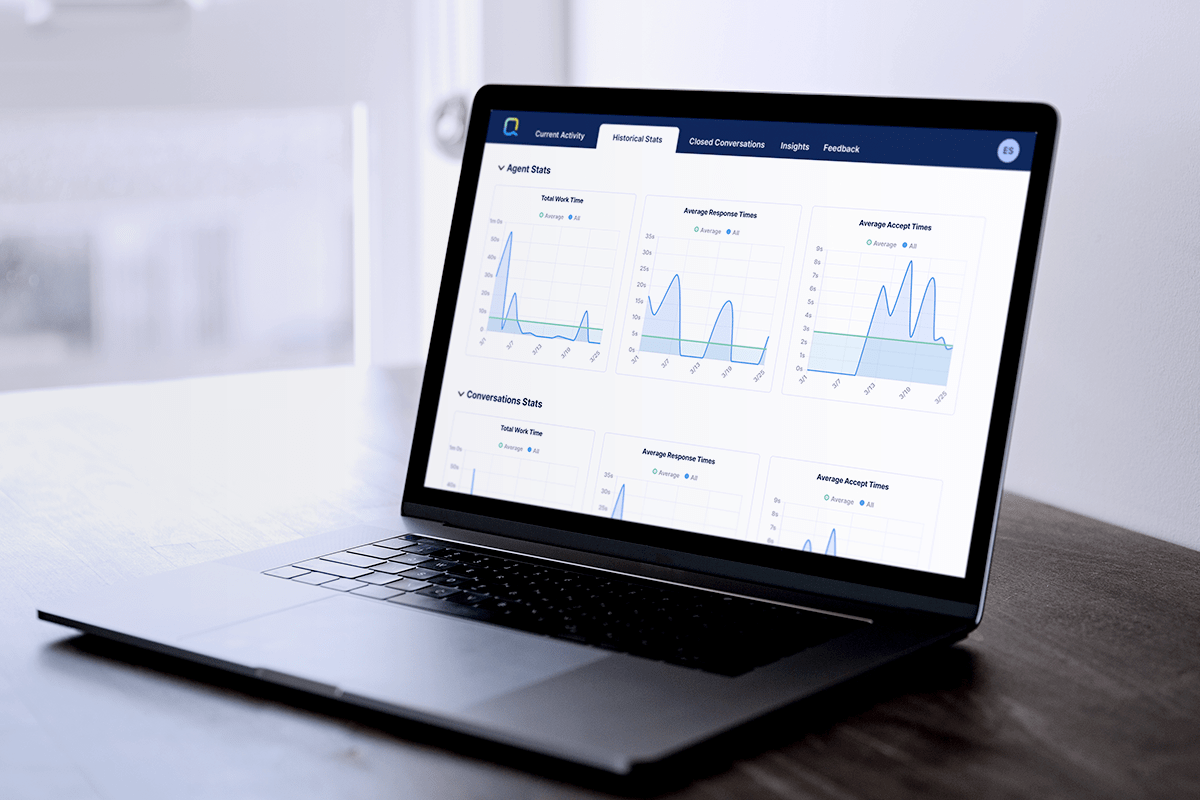Your contact center experience has a direct impact on your bottom line. A positive customer experience can nudge them toward a purchase, encourage repeat business, or turn them into loyal brand advocates.
But a bad run-in with your contact center? That can turn them off of your business for life.
No matter your industry, customer service plays a vital role in financial success. While it’s easy to look at your contact center as an operational cost, it’s truly an investment in the future of your business.
To maximize your return on investment, your contact center must continually improve. That means tracking contact center effectiveness and agent efficiency is critical.
But before you make any changes, you need to understand how your customer service center currently operates. What’s working? What needs improvement? And what needs to be cut?
Let’s examine how contact centers can measure customer service performance and boost efficiency.
What metrics should you monitor?
The world of contact center metrics is overwhelming—to say the least. There are hundreds of data points to track to assess customer satisfaction, agent effectiveness, and call center success.
But to make meaningful improvements, you need to begin with a few basic metrics. Here are three to start with.
1. Response time.
Response time refers to how long, on average, it takes for a customer to reach an agent. Reducing the amount of time it takes to respond to customers can increase customer satisfaction and prevent customer abandonment.
Response time is a top factor for customer satisfaction, with 83% expecting to interact with someone immediately when they contact a company, according to Salesforce’s State of the Connected Customer report.
When using response time to measure agent efficiency, have different target goals set for different channels. For example, a customer calling in or using web chat will expect an immediate response, while an email may have a slightly longer turnaround. Typically, messaging channels like SMS text fall somewhere in between.
If you want to measure how often your customer service team meets your target response times, you can also track your service level. This metric is the percentage of messages and calls answered by customer service agents within your target time frame.
2. Agent occupancy.
Agent occupancy is the amount of time an agent spends actively occupied on a customer interaction. It’s a great way to quickly measure how busy your customer service team is.
An excessively low occupancy suggests you’ve hired more agents than contact volume demands. At the same time, an excessively high occupancy may lead to agent burnout and turnover, which have their own negative effects on efficiency.
3. Customer satisfaction.
The most important contact center performance metric, customer satisfaction, should be your team’s main focus. Customer satisfaction, or CSAT, typically asks customers one question: How satisfied are you with your experience?
Customers respond using a numerical scale to rate their experience from very dissatisfied (0 or 1) to very satisfied (5). However, the range can vary based on your business’s preferences.
You can calculate CSAT scores using this formula:
Number of satisfied customers ÷ total number of respondents x 100 = CSAT
CSAT’s a great first metric to measure since it’s extremely important in measuring your agents’ effectiveness, and it’s easy for customers to complete.
There are lots of options for measuring different aspects of customer satisfaction, like customer effort score and Net Promoter Score®. Whichever you choose, ensure you use it consistently for continuous customer input.
Bonus tip: Capturing customer feedback and agent performance data is easier with contact center software. Not only can the software help with customer relationship management, but it can facilitate customer surveys, track agent data, and more.
How to assess contact center metrics.
Once you’ve measured your current customer center operations, you can start assessing and taking action to improve performance and boost customer satisfaction. But looking at the data isn’t as easy as it seems. Here are some things to keep in mind as you start to base decisions on your numbers.
Figure out your reporting methods.
How will you gather this information? What timeframes will you measure? Who’s included in your measurements? These are just a few questions you need to answer before you can start analyzing your data.
Contact center software, or even more advanced conversational AI platforms like Quiq, can help you track metrics and even put together reports that are ready for your management team to analyze and take action on.
Analyze data over time.
When you’re just starting out, it can be hard to contextualize your data. You need benchmarks to know whether your CSAT rating or occupancy rates are good or bad. While you can start with industry benchmarks, the most effective way to analyze data is to measure it against yourself over periods of time.
It takes months or even years for trends to reveal themselves. Start with comparative measurements and then work your way up. Month-over-month data or even quarter-over-quarter can give you small windows into what’s working and what’s not working. Just leave the big department-wide changes until you’ve collected enough data for it to be meaningful.
Don’t forget about context.
You can’t measure contact center metrics in a silo. Make sure you look at what’s going on throughout your organization and in the industry as a whole before making any changes. For example, a drop in customer response time might have to do with the influx of messages caused by a faulty product.
While collecting the data is easy, analyzing it and drawing conclusions is much more difficult. Keep the whole picture in mind when making any important decisions.
How to improve call center agent efficiency.
Now that you have the numbers, you can start making changes to improve your agent efficiency. Start with these tips.
Make incremental changes.
Don’t be tempted to make wide-reaching changes across your entire contact center team when you’re not happy with the data. Select specific metrics to target and make incremental changes that move the needle in the right direction.
For example, if your agent occupancy rates are high, don’t rush to add new members to your team. Instead, see what improvements you can make to agent efficiency. Maybe there’s some call center software you can invest in that’ll improve call turnover. Or perhaps all your team needs is some additional training on how to speed up their customer interactions. No matter what you do, track your changes.
Streamline backend processes.
Agents can’t perform if they’re constantly searching for answers on slow intranets or working with outdated information. Time spent fighting with old technology is time not spent serving your contact center customers.
Now’s the perfect time to consider a conversational platform that allows your customers to reach out using the preferred channel but still keeps the backend organized and efficient for your team.
Agents can bounce back and forth between messaging channels without losing track of conversations. Customers get to chat with your brand how they want, where they want, and your team gets to preserve the experience and deliver snag-free customer service.
Improve agent efficiency with Quiq’s Conversational AI Platform
If you want to improve your contact center’s efficiency and customer satisfaction ratings, Quiq’s conversational customer engagement software is your new best friend.
Quiq’s software enables agents to manage multiple conversations simultaneously and message customers across channels, including text and web chat. By giving customers more options for engaging with customer service, Quiq reduces call volume and allows contact center agents to focus on the conversations with the highest priority.

![[Infographic] 9 Effective Call Center Strategies You Can’t Miss](https://quiq.com/wp-content/uploads/2022/11/9-Ways-to-Improve-Call-Center-Efficiency-Feature.png)




